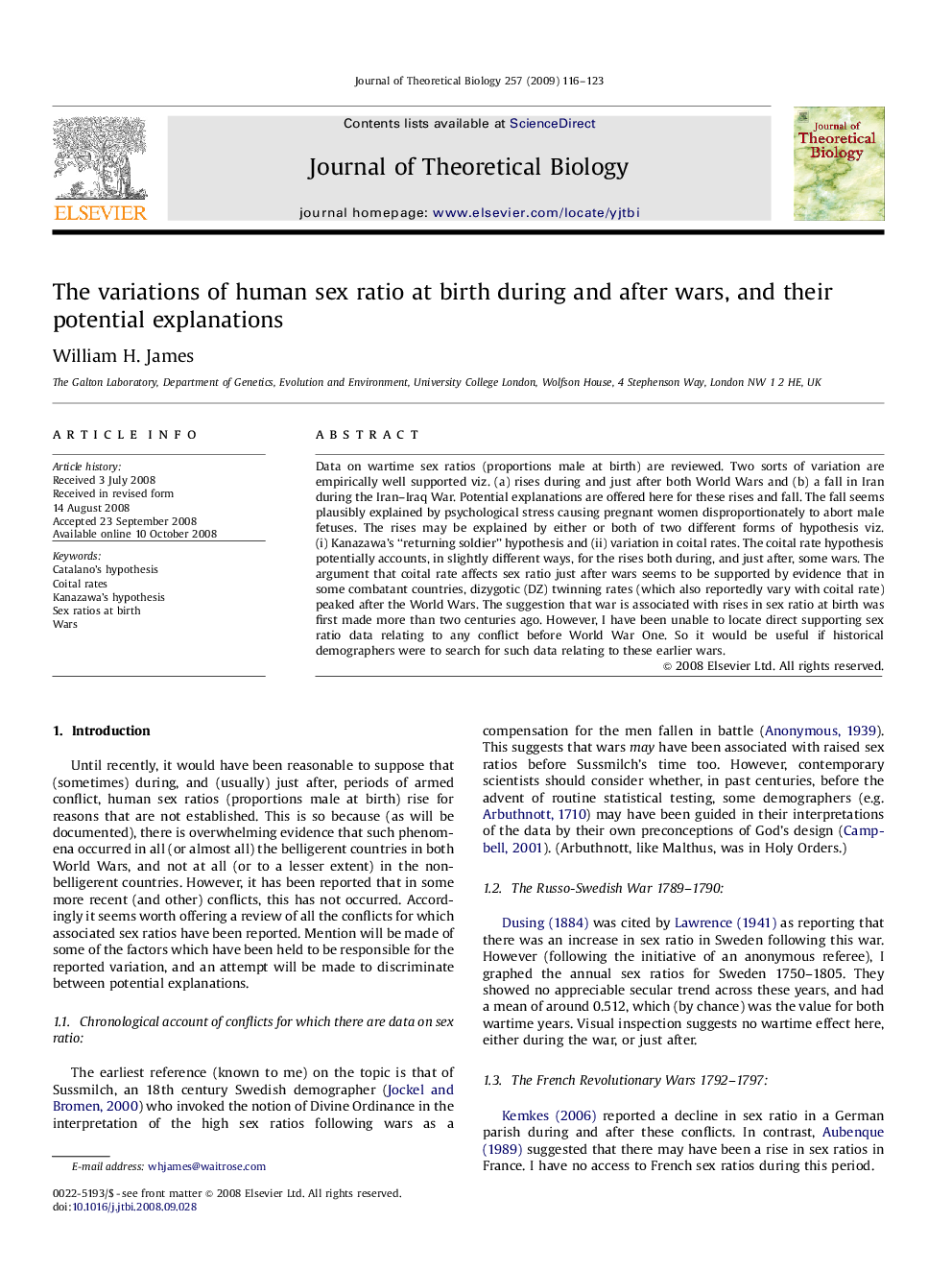| کد مقاله | کد نشریه | سال انتشار | مقاله انگلیسی | نسخه تمام متن |
|---|---|---|---|---|
| 4498507 | 1318985 | 2009 | 8 صفحه PDF | دانلود رایگان |

Data on wartime sex ratios (proportions male at birth) are reviewed. Two sorts of variation are empirically well supported viz. (a) rises during and just after both World Wars and (b) a fall in Iran during the Iran–Iraq War. Potential explanations are offered here for these rises and fall. The fall seems plausibly explained by psychological stress causing pregnant women disproportionately to abort male fetuses. The rises may be explained by either or both of two different forms of hypothesis viz. (i) Kanazawa's “returning soldier” hypothesis and (ii) variation in coital rates. The coital rate hypothesis potentially accounts, in slightly different ways, for the rises both during, and just after, some wars. The argument that coital rate affects sex ratio just after wars seems to be supported by evidence that in some combatant countries, dizygotic (DZ) twinning rates (which also reportedly vary with coital rate) peaked after the World Wars. The suggestion that war is associated with rises in sex ratio at birth was first made more than two centuries ago. However, I have been unable to locate direct supporting sex ratio data relating to any conflict before World War One. So it would be useful if historical demographers were to search for such data relating to these earlier wars.
Journal: Journal of Theoretical Biology - Volume 257, Issue 1, 7 March 2009, Pages 116–123